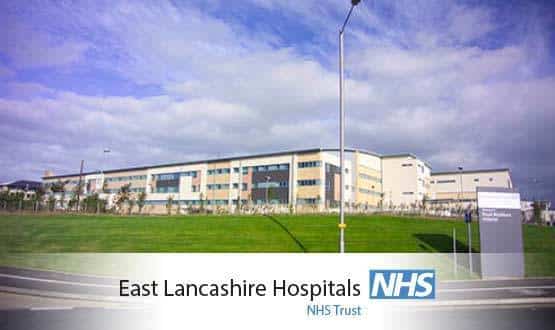East Lancashire Hospitals NHS Trust has converted its paper-based nursing risk assessment forms into a computerised process as part of a collaboration with population health and analytics company Caradigm.
The trust worked with Caradigm to digitise seven forms that nurses use to assess the risk levels of patients in various areas.
They are used both during patient admissions and throughout a patient’s stay in hospital and cover areas such as falls, infection prevention and patient handling.
The electronic forms are now live across 36 wards and 15,000 assessments are being completed every month.
Nurses can access the assessment on a range of devices, including PCs, laptops and bedsive TV screens. Testing is currently being carried on testing the software on tablets.
The forms build on East Lancashire Hospitals’ use of the Caradigm Intelligence Platform to aggregate clinical data from a variety of systems. The trust has also digitised its pre-operative assessments within its orthopaedic outpatients clinic.
East Lancashire Hospitals now intends to review its care plans and additional nursing documentation with a view to bringing these on to the Caradigm platform.
The trust says the digital risk assessment forms have had “highly positive user acceptance testing”.
Margaret Taylor, ward manager on the gynaecology and breast ward said: “The previous risk assessment forms required nurses to manually calculate things like BMI and add up the score of the risk assessment.
“Now, the electronic forms are doing all of this for us and are proving to be a lot quicker to complete than when we were producing written data. I would say up to 50% more.”
She explained that the new system automatically adds patients to the ward information list when nurses log on. Nurses are then prompted on what forms need to be completed for each patient.
Explanatory medical information is also built into the risk assessment, which Taylor said is beneficial, especially for newly qualified nurses.
“If you consider that my ward alone can carry out as many as 100 risk assessments every week and that other wards will have similar numbers, the benefits of the new system are evident. I am confident that it will be a highly valuable addition to the organisation.”
Ian Woodburn, chief nursing information officer, said: “From a strategic perspective, the system will reduce duplication; helping to ensure that the right information is recorded and available to the right person, at the right time, in the right place.
“This, in turn, will ensure that there is no variation in the data being recorded, and means we can move towards a ‘record once, use many times’ model of data management.”
East Lancashire Hospitals is in the middle of reviewing its five-year strategy for information management and technology.
The trust initially had an IM&T strategy for 2012-17 to refresh its infrastructure, but board papers published earlier this year revealed plans to review the strategy across 2015-16 so it can “embrace the opportunities from both the emerging technologies and the new integrated health care models, based upon the new NHS five year plan.”

